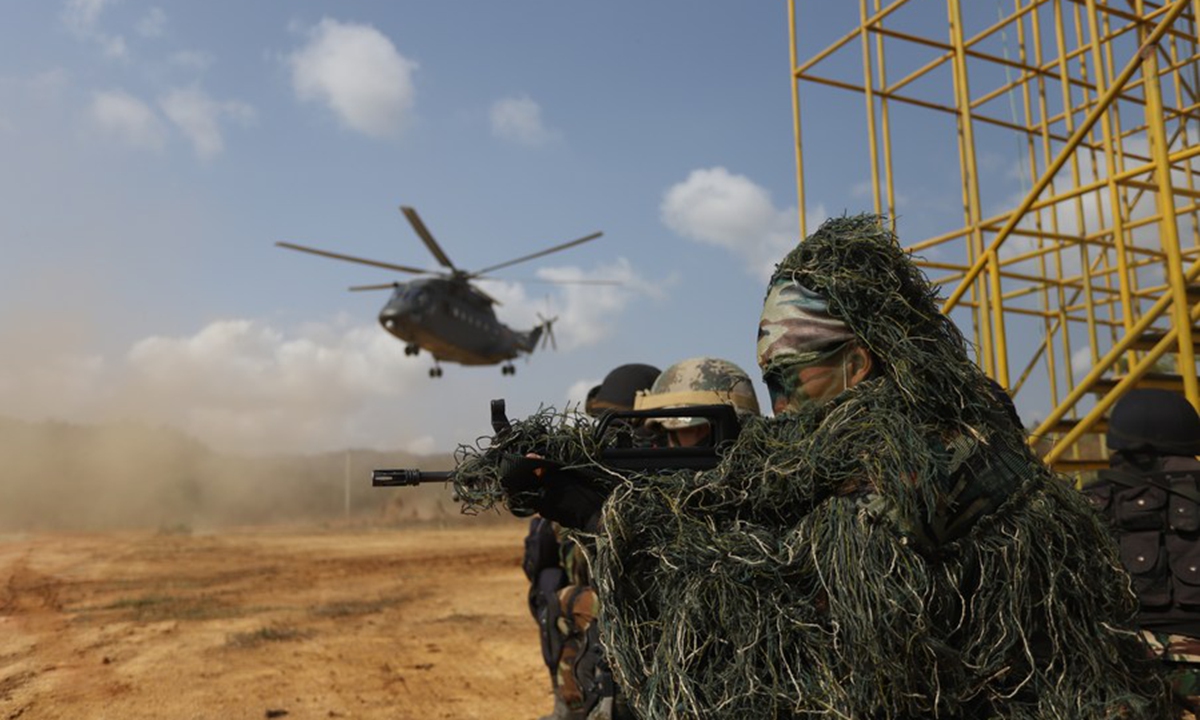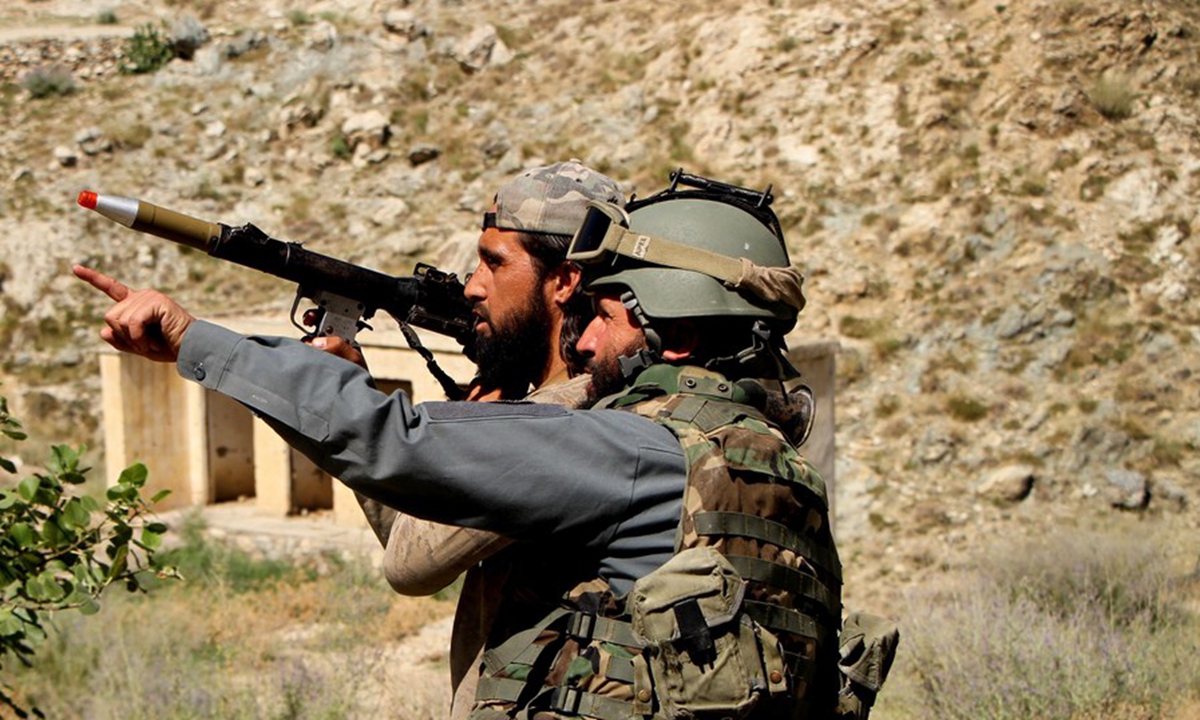COVID-19 brings new challenges to counter-terrorism efforts: UN official
Source: Xinhua Published: 2020/8/25 13:58:55

Soldiers take part in the "Dragon Gold 2020" joint drill in Cambodia's southwestern Kampot province, March 26, 2020. (Xinhua)
UN Undersecretary-General for UN Counter-Terrorism Office Vladimir Voronkov on Monday called for attention to new challenges brought by COVID-19 to counter-terrorism efforts.
"This pandemic environment raises several strategic and practical challenges for counter-terrorism," Voronkov told the Security Council.
The Islamic State (IS) and other terrorist groups seek to exploit the far-reaching disruption and negative socio-economic and political impacts of the pandemic. Strengthening collective action and international counter-terrorism cooperation must remain a priority during and after the pandemic, he said.
Since the start of the year, there have seen contrasting regional disparities in the threat trajectory. In conflict zones, the threat has increased, as evidenced by the IS regrouping and increasing activity in Iraq and Syria. In non-conflict zones, the threat appears to have decreased in the short term. Measures to minimize the spread of COVID-19, such as lockdowns and restrictions on movement, seem to have reduced the risk of terrorist attacks in many countries, said Voronkov.
Yet, there is a continued trend of attacks by individuals inspired online and acting alone or in small groups, which could be fueled by the IS opportunistic propaganda efforts during the COVID-19 crisis, he warned.

Afghan security force members take part in a military operation against Islamic State (IS) in Achin district of eastern Nangarhar province, Afghanistan, Sept. 16, 2019. (Photo by Saifurahman Safi/Xinhua)
The pandemic's impact on recruitment and fundraising activities remains unclear, as its socio-economic fallout could exacerbate conditions conducive to terrorism and increase the medium- to long-term threat, both within and outside conflict zones, he said.
Meanwhile, there is no clear indication of a change in the IS strategic direction under its new leader. Command and control arrangements between the IS core and its remote "provinces" have continued to loosen, thereby strengthening regional affiliates, he said.
Voronkov also briefed the council on some developments in different regions concerning the IS.
In the Middle East, he said, the IS core has continued to consolidate its position in some areas previously under its control, operating increasingly confidently and openly.
More than 10,000 IS fighters are estimated to remain active in Iraq and Syria, moving freely in small cells between the two countries. There has been a significant increase in IS attacks in both countries in 2020 compared to 2019, he said.
The COVID-19 crisis has further complicated the already dire and unsustainable situation of thousands of individuals with suspected links to the IS who are stranded in the conflict zone, especially women and children. Repatriation, prosecution, rehabilitation, and reintegration and the protection of the vulnerable have become ever more urgent, he said.
While some states have repatriated and continue to repatriate children, there has been only limited progress in overcoming legal, political, and practical hurdles to repatriation. The global threat from the IS is likely to increase if the international community fails to meet this challenge. Decisive action is required from member states on humanitarian, human rights, and security grounds, he said.
In Africa, the Islamic State in West Africa Province (ISWAP) remains a major focus of IS global propaganda, and its total membership of approximately 3,500 makes it one of the largest of the remote "provinces," said Voronkov.
ISWAP continued to reinforce links with the Islamic State in the Greater Sahara, which remains the most dangerous group in the tri-border area of Burkina Faso, Mali, and the Niger, he said.
Although the IS has only a few hundred fighters in Libya, it has been exploiting local tensions between ethnic groups. It represents a potent threat capable of broader regional impact. The risk of escalation of the conflict in Libya could allow the IS to expand its activity, he warned.
In Asia, the IS affiliate in Afghanistan remains capable of high-profile attacks in various parts of the country despite continued territorial losses and the arrest of its leaders. The group seeks to use Afghan territory to spread its influence across the region, similar to the approach of the IS core. It also aims to attract fighters who oppose, among others, the peace agreement reached between the Taliban and the United States, he said.
In Europe, the threat continues to come mainly from Internet-driven, homegrown terrorist radicalization. Acute concerns persist about radicalization and failed rehabilitation in prisons, and the imminent release of dangerous inmates with a terrorism background or connections, said Voronkov.
Several European countries report a growing terrorist threat from "right-wing violent extremism," which requires intelligence services to shift their operational and analytical priorities away from a focus on the IS, he said.
Posted in: CROSS-BORDERS